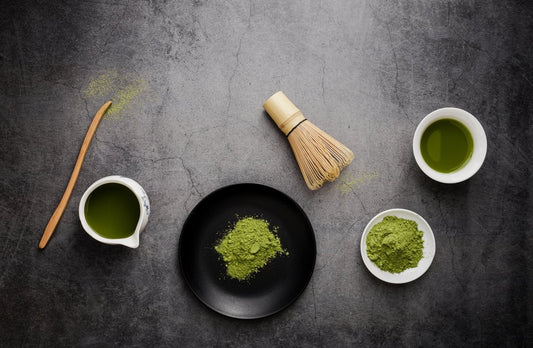The Art and Aroma of Hojicha in Japanese Tea Ceremonies
Japanese tea ceremonies are a beautiful and intricate process that is steeped in tradition and history. From the preparation of the tea to the way it is served, every aspect of the ceremony is thoughtfully planned and executed. One tea that has grown in popularity is hojicha tea, a roasted green tea with a unique flavour profile. In this blog post, we will dive deeper into the world of Japanese tea ceremonies and explore the significance and use of hojicha in this special event.
A Roasted Revelation: The Characteristics of Hojicha
Hojicha tea is a type of green tea that is roasted over charcoal, which gives it its distinct flavour. The roasting process lowers the tea's caffeine content, making it a popular choice for those who want to enjoy a relaxing cup of tea without feeling jittery. In Japanese tea ceremonies, hojicha is typically served in the later stages, as it is believed to aid in digestion and promote relaxation.
A Sip of Tradition: The Role of Hojicha in Tea Ceremonies
In the traditional tea ceremony, the host will prepare and serve hojicha to the guests, starting with a small cup known as a chawan. The guests will be offered a second cup, which will be larger than the first. The second cup represents the continuation of the tea ceremony and is a sign of respect from the host to the guests. The entire ceremony is steeped in meaningful gestures and rituals, making every movement deliberate and intentional.
A Sweet Harmony: Hojicha and Wagashi
One unique aspect of hojicha tea is that it is often served with a sweet snack, such as a small cake or cookie. This is known as wagashi, which means "Japanese confectionery" and is an important part of the tea ceremony. The sweets are carefully chosen and presented to complement the flavour of the tea and to balance out the bitterness that can sometimes be found in hojicha. This pairing of tea and sweets is referred to as wakashu, which translates to "harmony of tea and sweets."
Beyond the Ceremony: Hojicha in Everyday Life
Many people enjoy hojicha tea outside of the traditional tea ceremony as well. Its nutty flavour and low caffeine content make it a perfect choice for a cozy evening at home or as a complement to a sweet dessert. In fact, hojicha has become so popular that you can now find it in a variety of forms, from loose leaf tea to bottled drinks and even ice cream.
Hojicha—A Toast to Tradition and Taste
In conclusion, hojicha is more than just a tea flavour - it's a representation of Japanese culture and tradition. Its unique roasted flavour and significance in the tea ceremony make it a true gem of the tea world. Whether you're a tea enthusiast or just looking to try something new, give hojicha a try and experience the mesmerizing world of Japanese tea ceremonies.




